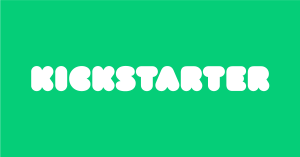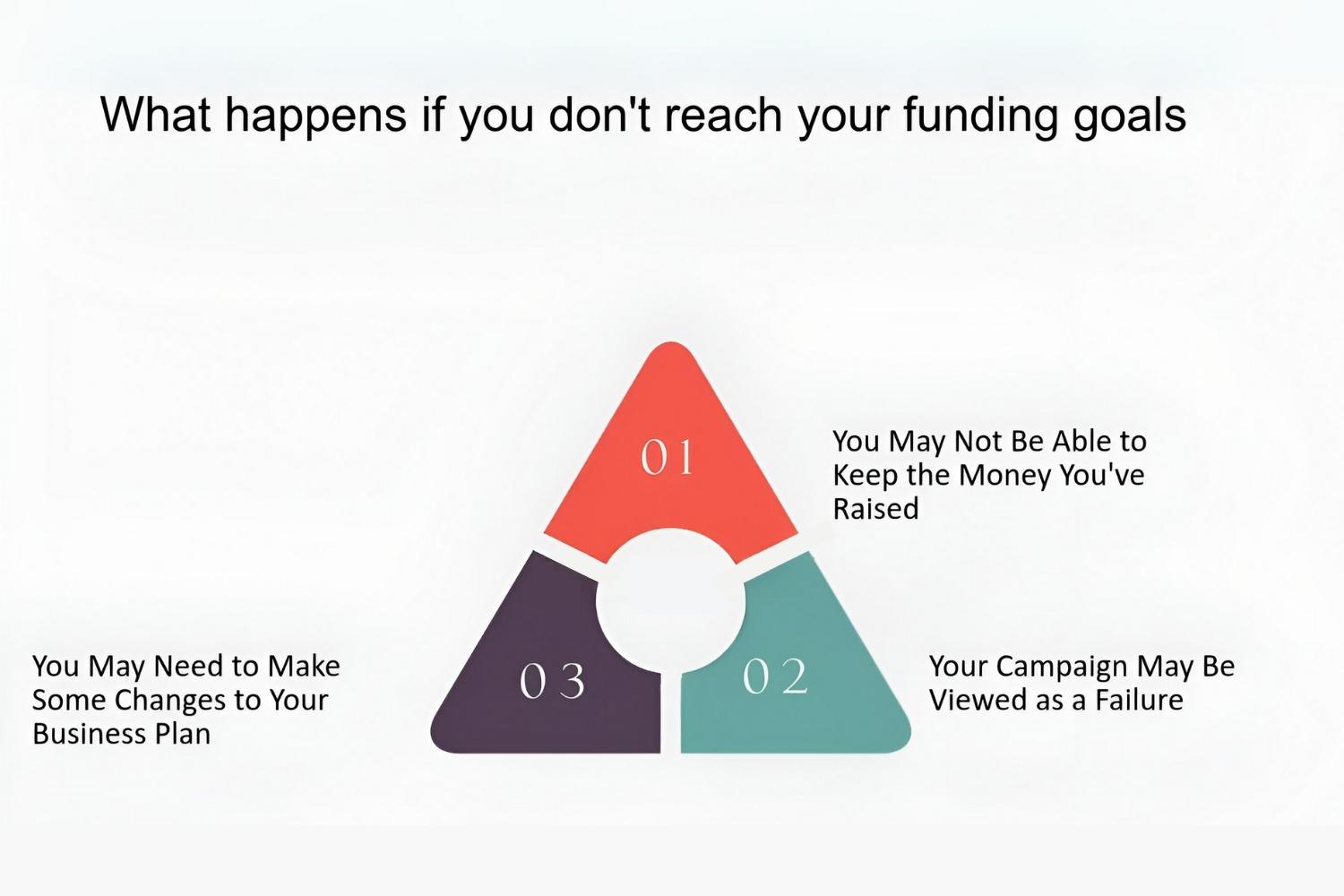Introduction
Welcome to the exciting world of crowdfunding! If you have a brilliant idea or a passion project that needs funding, crowdfunding is a powerful avenue to turn your dreams into reality. However, creating a successful crowdfunding campaign is no easy feat. It requires careful planning, strategic execution, and a deep understanding of the challenges that lie ahead.
Not only is the crowdfunding landscape competitive, but it’s also constantly evolving. With thousands of campaigns vying for attention on popular platforms like Kickstarter and Indiegogo, standing out from the crowd can be a daunting task. That’s why it’s crucial to approach your campaign with a clear roadmap and an understanding of the biggest challenges you are likely to face.
In this article, we will explore the key challenges that creators often encounter when launching a crowdfunding campaign. From choosing the right platform to handling unexpected setbacks, we’ll provide valuable insights and tips on how to overcome these hurdles and increase your chances of success.
It’s important to note that crowdfunding is not a guaranteed pathway to success. While it can offer tremendous opportunities, it also demands hard work, dedication, and creativity. By understanding the challenges that lie ahead, you will be better equipped to navigate the ups and downs of the crowdfunding journey.
So, if you’re ready to dive in and learn how to tackle the biggest challenges in creating a successful crowdfunding campaign, let’s get started!
Choosing the Right Platform
One of the first and most critical decisions you will need to make when creating a crowdfunding campaign is selecting the right platform to host your campaign. There are numerous platforms available, each with its own set of benefits and target audience. Here are some key factors to consider when choosing the right platform:
1. Audience: Research the demographics and interests of the users on different crowdfunding platforms. Determine whether your project aligns with the platform’s community and whether they are likely to support your campaign.
2. Project Type: Different platforms cater to different project categories. Some platforms are more suitable for art, design, and technology projects, while others focus on social causes or entrepreneurial ventures. Choose a platform that aligns with your project type and goals.
3. Success Rate: Look at the success rates of projects similar to yours on different platforms. This will give you an idea of the platform’s track record and the likelihood of achieving your funding goal.
4. Fees and Charges: Consider the fees and charges associated with each platform. Some platforms charge a percentage of total funds raised, while others charge a fixed fee. Evaluate your budget and determine which platform offers the best value for your project.
5. Platform Features: Explore the features and tools offered by each platform. Consider factors such as user interface, customization options, analytics, and social sharing capabilities. Choose a platform that provides the features you need to effectively showcase your campaign.
6. Reputation and Trustworthiness: Research the reputation and trustworthiness of the platforms you are considering. Look for reviews, testimonials, and success stories from other creators who have used the platform. It’s important to choose a platform that has a solid track record and a trusted payment system to ensure the safety and security of your backers.
By carefully considering these factors, you can select the platform that best suits your project and maximizes your chances of success. Remember, choosing the right platform sets the foundation for your entire crowdfunding campaign, so take the time to evaluate your options before making a decision.
Setting Realistic Funding Goals
One of the crucial aspects of creating a successful crowdfunding campaign is setting realistic funding goals. While it’s natural to have big dreams and aspirations for your project, it’s essential to be practical and strategic when determining your funding target. Here are some key considerations when setting your funding goals:
1. Project Budget: Evaluate the costs associated with your project and determine the minimum amount needed to bring it to life. Include manufacturing costs, marketing expenses, shipping fees, and any other relevant expenses. Make sure your funding goal covers these essential aspects to avoid running into financial difficulties during or after the campaign.
2. Campaign Length: Consider the duration of your campaign when setting your funding goal. A longer campaign may allow you to set a lower funding goal, as you have more time to attract backers. Conversely, a shorter campaign may require a higher funding goal to create a sense of urgency and encourage quick action from potential supporters.
3. Backer Considerations: Think about your potential backers and their financial capacity. Setting a funding goal that is too high may discourage backers from supporting your campaign, as they may perceive it as unachievable. Conversely, setting a realistic and attainable funding goal can inspire confidence in potential backers and motivate them to contribute to your campaign.
4. Stretch Goals: Consider incorporating stretch goals into your campaign. These are additional funding targets that you can set beyond your initial funding goal. Stretch goals can help generate excitement as you reach milestones and offer additional incentives to backers. However, it’s important to prioritize your primary funding goal and ensure that it is realistic and achievable before focusing on stretch goals.
5. Research Successful Campaigns: Study successful campaigns in your project category and analyze their funding goals. This can give you insights into what is realistic and attainable within your niche. Pay attention to projects that have similar scopes, target audience, and funding goals to gain a better understanding of what you can aspire to achieve.
By setting realistic funding goals, you increase your credibility as a creator and instill confidence in potential backers. Remember, crowdfunding is not just about the money; it’s about building a community of supporters who believe in your project. By providing transparency and setting realistic expectations, you can attract and retain backers who are invested in the success of your campaign.
Building a Strong Online Presence
In today’s digital age, having a strong online presence is essential for the success of your crowdfunding campaign. Building a solid online presence not only helps to attract potential backers but also establishes credibility and trust in your project. Here are some key strategies to consider when building a strong online presence for your campaign:
1. Website or Landing Page: Create a dedicated website or landing page for your crowdfunding campaign. This serves as a centralized hub where potential backers can learn more about your project, watch videos, view images, read updates, and ultimately pledge their support. Make sure your website is visually appealing, user-friendly, and optimized for mobile devices.
2. Social Media Platforms: Leverage social media platforms such as Facebook, Twitter, Instagram, and LinkedIn to connect with your target audience. Share engaging content, post regular updates about your campaign progress, and interact with your followers. Use relevant hashtags and tag influential people or organizations to maximize your reach and engagement.
3. Engaging Content: Develop high-quality and engaging content to capture the attention of your audience. This can include blog posts, videos, infographics, and other visual content that showcases the uniqueness and value of your project. Share informative and entertaining content related to your project’s industry or niche to position yourself as an expert and build trust.
4. Email Marketing: Build an email list of interested individuals who want to stay updated on your campaign. Send regular newsletters and updates, providing valuable information and enticing them to support your project. Use personalized emails to make your communication more personal and effective.
5. Influencer Partnerships: Collaborate with influencers and industry experts who have a significant following in your project’s niche. Their endorsement and promotion of your campaign can greatly boost your visibility and credibility. Work with influencers who align with your project’s values and target audience to ensure a meaningful partnership.
6. Online Communities and Forums: Participate in online communities and forums related to your project’s industry or interests. Contribute valuable insights, answer questions, and engage in discussions. Build genuine connections and establish yourself as a trusted and knowledgeable member of the community. Avoid excessive self-promotion, as the emphasis should be on providing value rather than being overly promotional.
Building a strong online presence requires consistent effort, creativity, and engagement. Remember to listen to your audience, respond to comments and inquiries promptly, and adapt your strategies based on their feedback. By establishing a strong online presence, you increase your visibility, reach a wider audience, and ultimately increase your chances of achieving your crowdfunding goals.
Creating a Compelling Campaign Story
A well-crafted and compelling campaign story is crucial to capturing the attention and imagination of potential backers. Your campaign story goes beyond simply explaining the features and benefits of your project; it seeks to connect emotionally with your audience, inspire them, and make them feel invested in your project’s success. Here are some key elements to consider when creating a compelling campaign story:
1. Start with a Hook: Begin your campaign story with a captivating hook that grabs the reader’s attention from the start. This could be a powerful statement, a thought-provoking question, or a compelling anecdote that relates to your project’s purpose and impact.
2. Tell Your Why: Clearly and concisely explain the motivation behind your project. Share the story behind its conception, the problem it solves, or the impact it will make. Connect with your audience on an emotional level by highlighting the personal experiences, struggles, or inspirations that led you to embark on this project.
3. Showcase the Benefits: Clearly articulate the unique value and benefits that your project offers. Explain how it solves a problem, enhances a user’s life, or fulfills a need in the market. Use relatable examples and ensure that your audience understands how your project will positively impact their lives.
4. Visual Appeal: Incorporate visually appealing and high-quality images, videos, and graphics to enhance your campaign story. Humans are visual creatures, and compelling visuals can evoke emotions, paint a vivid picture of your project, and engage your audience on a deeper level.
5. Personalize Your Message: Share personal stories, experiences, or testimonials that showcase the authenticity and passion behind your project. By humanizing your campaign story, you create a deeper connection with your audience, making them more likely to support and share your project.
6. Overcome Objections: Address potential concerns or objections that your audience may have. Anticipate common questions and explain how you have overcome challenges or mitigated risks associated with your project. Use storytelling techniques to convey your expertise, credibility, and dedication to ensuring a successful outcome.
7. Call to Action: End your campaign story with a clear and compelling call to action. Invite your audience to join you on this journey and become a backer of your project. Provide a seamless and intuitive way for them to contribute, whether it’s through a pledge button on your website or a direct link to your crowdfunding campaign page.
Your campaign story is the foundation upon which your crowdfunding campaign is built. It should be authentic, compelling, and relatable to resonate with potential backers. By crafting a powerful campaign story, you can inspire others to believe in your project, support your vision, and help you bring it to life.
Planning an Effective Marketing Strategy
An effective marketing strategy is crucial for the success of your crowdfunding campaign. It helps to create awareness, generate excitement, and drive potential backers to your campaign page. Here are some key steps to consider when planning your marketing strategy:
1. Identify Your Target Audience: Determine who your ideal backers are and tailor your marketing efforts to reach them. Research their demographics, interests, and online behavior. Understanding your target audience will help you choose the right marketing channels and craft compelling messages that resonate with them.
2. Build Pre-launch Buzz: Start generating excitement for your campaign before it even launches. Utilize social media, email marketing, press releases, and partnerships with industry influencers to create anticipation and build a community of supporters. Tease your project’s unique features, share behind-the-scenes sneak peeks, and offer exclusive rewards to early backers.
3. Create Engaging Content: Develop high-quality and engaging content that tells the story of your project, highlights its benefits, and captures the attention of your target audience. This can include blog posts, videos, infographics, and social media posts. Regularly update your followers with compelling content that keeps them engaged and excited about your campaign.
4. Leverage Social Media: Social media platforms are powerful tools for reaching and engaging with your audience. Create dedicated profiles for your campaign and consistently share updates, behind-the-scenes content, and sneak peeks. Utilize relevant hashtags, run contests or giveaways, and actively respond to comments and messages to build a strong online community.
5. Utilize Influencers: Collaborate with influencers or industry experts who have a strong following in your project’s niche. Their endorsement and promotion can greatly expand your reach and attract more backers. Ensure that the influencers you partner with align with your project’s values and target audience to maximize the effectiveness of the collaboration.
6. Harness the Power of Email Marketing: Build an email list of interested individuals who want to stay updated on your campaign. Send regular newsletters, exclusive updates, and reminders about your campaign’s progress. Use personalized emails to make your communication more genuine and effective.
7. Outreach and PR: Reach out to relevant bloggers, journalists, and media outlets to share your campaign story. Craft a compelling press release and personalize your outreach to increase the chances of getting media coverage. Participate in podcasts, interviews, and online events to further amplify your campaign’s exposure.
8. Collaborate with Communities: Engage with online communities and forums relevant to your project. Contribute valuable insights, answer questions, and share your project’s story. Building authentic connections within these communities can generate interest, credibility, and potential backers for your campaign.
By carefully planning and executing a comprehensive marketing strategy, you can significantly enhance the visibility and success of your crowdfunding campaign. Remember to track your results, pivot your strategy if needed, and stay consistent in your marketing efforts throughout the duration of your campaign.
Engaging with the Crowd
Engaging with your crowd is a vital component of running a successful crowdfunding campaign. Your backers are not just financial supporters; they are also your advocates and ambassadors. By building strong connections and actively engaging with your crowd, you can foster loyalty, generate excitement, and encourage word-of-mouth promotion. Here are some strategies to effectively engage with your crowd:
1. Respond Promptly: Be responsive to messages, comments, and inquiries from your backers. Promptly addressing their concerns and questions shows that you care about their support and value their engagement. Make it a priority to regularly check your campaign page, social media platforms, and email inbox for any incoming messages.
2. Provide Regular Updates: Keep your backers informed about the progress of your campaign. Share updates on key milestones, production developments, or any changes that may affect the project timeline. Use a mix of media such as text, images, videos, and live streams to make the updates engaging and informative.
3. Show Appreciation: Express gratitude for your backers’ support and contributions. Regularly thank your backers individually or collectively through social media shout-outs, personal emails, or even personalized rewards. Demonstrate that you value their involvement and that their backing is crucial to the success of your project.
4. Foster a Community: Create a sense of belonging by building a community around your project. Encourage backers to share their thoughts, ideas, and feedback. Foster interaction among backers by creating a dedicated space, such as a forum or a private Facebook group, where they can connect with you and other supporters.
5. Offer Exclusive Backer Benefits: Provide your backers with exclusive perks and benefits to show your appreciation for their support. This could include early access to updates, exclusive discounts or offers, or even personalized experiences related to the project. Make your backers feel special and valued for their contribution.
6. Seek Feedback: Actively seek feedback from your backers throughout the campaign. Encourage them to share their thoughts, suggestions, and concerns. This feedback can prove invaluable not only for improving your project but also for understanding your audience better and strengthening your relationship with your backers.
7. Involve Backers in Decision-making: Empower your backers by involving them in certain project-related decisions. This could be through polls to choose a design or color option, seeking input on stretch goal rewards, or inviting them to vote on certain aspects of your project. Their involvement not only builds engagement but also creates a sense of ownership and pride in the final outcome.
Engaging with your crowd is not a one-time effort; it requires ongoing commitment and dedication throughout your campaign. By actively interacting with your backers, you create a community that believes in your project and is enthusiastic about supporting its success. These engaged backers can become your most loyal advocates, helping you reach more potential backers and further amplifying the impact of your crowdfunding campaign.
Offering Unique and Attractive Rewards
One of the key elements that entices potential backers to support your crowdfunding campaign is the rewards you offer. Well-designed and enticing rewards not only incentivize backers to pledge their support but also serve as a way to express gratitude and create a positive experience. Here are some strategies for offering unique and attractive rewards:
1. Differentiate Reward Tiers: Create a range of reward tiers to cater to different budget levels. Offer a variety of options that provide value at various price points. Ensure that each tier offers something unique and compelling, enticing backers to choose higher levels of support in exchange for more exclusive or valuable rewards.
2. Early Bird Specials: Create a sense of urgency by offering limited-time early bird rewards. These can include discounted pricing, exclusive access, or additional perks for backers who pledge within a specified timeframe. Early bird rewards not only encourage early support but also generate initial momentum and excitement for your campaign.
3. Personalized Rewards: Consider offering personalized or customized rewards that make backers feel special and valued. This could include personalized messages, customized merchandise, or opportunities for backers to have a direct influence on certain aspects of your project. Personalization adds a personal touch that enhances the backer experience.
4. Limited Edition or Exclusive Items: Introduce limited edition or exclusive items as rewards to create a sense of exclusivity and rarity. These can be special editions, unique variations, or one-of-a-kind items that are only available through your crowdfunding campaign. Limited editions appeal to collectors and create a sense of urgency and value among backers.
5. Stretch Goal Rewards: Plan stretch goals that unlock additional rewards as your campaign surpasses certain funding milestones. These stretch goal rewards should be enticing and distinct from your original rewards. They provide an extra incentive for backers to continue supporting your campaign and help generate excitement and momentum throughout the campaign.
6. Behind-the-Scenes Access: Offer backers an exclusive behind-the-scenes experience or access to the development process of your project. This can include sneak peeks, work-in-progress updates, or special invitations to virtual or in-person events related to your project. Providing this behind-the-scenes access helps backers feel connected and engaged with your project’s journey.
7. Collaboration Opportunities: Explore rewards that involve collaborations with backers. This could include opportunities for backers to contribute ideas, provide feedback, or even be part of the creative process. Involving backers in collaboration fosters a sense of ownership and excitement, making them feel like valued participants in your project.
When offering rewards, it’s important to strike a balance between uniqueness, value, and feasibility. Ensure that the rewards align with the theme of your project and deliver a memorable and positive experience to your backers. By offering unique and attractive rewards, you not only encourage more backers to support your campaign but also create a deeper connection and sense of appreciation among your supporters.
Maintaining Momentum throughout the Campaign
Maintaining momentum throughout your crowdfunding campaign is essential to keep backers engaged and attract new supporters. A stagnant campaign can lead to a decline in interest and fewer pledges. To sustain momentum, you need to actively promote and create excitement for your project. Here are some strategies to maintain momentum throughout your crowdfunding campaign:
1. Regular Updates: Provide your backers with regular updates on the progress of your campaign. Share new milestones, achievements, and any exciting developments. This keeps backers informed and engaged, showing them that your project is progressing and that their support is making a difference.
2. Engage with Backers: Continuously engage with your backers by responding to comments, answering questions, and thanking them for their support. Show genuine appreciation for their involvement and make them feel like valued members of your campaign. This active engagement fosters a sense of community and encourages ongoing support.
3. Share Success Stories: Highlight success stories related to your project to create buzz and build credibility. This could include testimonials from satisfied customers, early adopters, or backers who have received their rewards and are thrilled with the outcome. These success stories demonstrate the value and quality of your project, encouraging others to join in.
4. Social Media Campaigns: Utilize social media platforms to run dedicated campaigns that generate excitement and encourage sharing. These can include contests, giveaways, or promotional events that reward backers for spreading the word about your campaign. Incentivize backers to share your project with their networks and amplify its reach.
5. Collaborate with Influencers: Partner with influencers or industry experts who can create buzz around your campaign. Their endorsements and promotions can attract new backers who trust their recommendations. Work with influencers who align with your project’s values and target audience to maximize the impact of their support.
6. Offer Time-Limited Promotions: Introduce time-limited promotions or limited-quantity rewards to create a sense of urgency and exclusivity. Providing incentives for backers to pledge within a specific timeframe can help generate a surge of activity and attract new supporters who fear missing out on these time-limited offers.
7. Leverage Press and Media: Continuously reach out to press outlets, bloggers, and journalists to secure media coverage for your campaign. This exposure can attract new backers and generate significant interest in your project. Craft compelling press releases, offer interviews, and provide story angles that resonate with the media’s audience.
8. Cross-Promote with Complementary Projects: Collaborate with other creators or projects that complement yours, and cross-promote each other’s campaigns. This mutually beneficial arrangement exposes your project to a new audience that may be interested in supporting your campaign. It’s important to choose collaborations that align with your project and target audience.
Remember, maintaining momentum requires ongoing effort and creativity. Regularly assess your campaign’s progress, identify areas that need improvement, and adapt your strategies accordingly. By actively promoting your campaign and engaging with backers, you can sustain and even increase momentum, leading to a more successful crowdfunding campaign.
Overcoming Funding Plateaus
Experiencing funding plateaus during your crowdfunding campaign is a common challenge that many creators face. A funding plateau occurs when the flow of pledges slows down, leading to a stagnation in the campaign’s progress. Overcoming these plateaus is crucial to ensure the success of your campaign. Here are some strategies to overcome funding plateaus:
1. Assess and Adjust: Evaluate your campaign’s performance and identify any potential bottlenecks or areas for improvement. Analyze your messaging, rewards, marketing efforts, and overall campaign strategy. Once you identify critical areas, make necessary adjustments to reinvigorate interest and attract new backers.
2. Offer Limited-Time Promotions: To overcome a funding plateau, consider introducing limited-time promotions or exclusive offers. This could include special discounts, additional rewards, or early access to new updates or features. These time-limited promotions create a sense of urgency, encouraging backers to pledge and help push the campaign past the plateau.
3. Engage Your Community: Leverage the support of your existing backers and community to overcome funding plateaus. Encourage them to spread the word about your campaign through social media, personal networks, and referral programs. Engage with your community by personally reaching out and asking for their continued support to help propel the campaign forward.
4. Introduce Stretch Goals: Unveil stretch goals that add value and excitement to your campaign. These additional goals and rewards act as incentives for existing backers to increase their pledges and attract new backers. The prospect of unlocking new and exciting rewards can reignite interest and motivate people to join or increase their support.
5. Seek External Promotion: Explore opportunities for external promotion to expand your campaign’s visibility and reach. Reach out to media outlets, influencers, bloggers, or industry-specific websites to feature your project or write articles about it. External promotion can introduce your campaign to a new audience and generate fresh interest.
6. Provide Social Proof: Showcase positive reviews, testimonials, or endorsements from satisfied backers or influential personalities within your project’s niche. Social proof helps build trust and credibility, especially during funding plateaus when potential backers may be hesitant to take the plunge. Highlighting others’ positive experiences can inspire confidence and encourage new backers to support your campaign.
7. Host Live Events: Organize live events or virtual gatherings to engage with your audience and create a sense of excitement. This can include live Q&A sessions, webinars, product demonstrations, or behind-the-scenes tours. These events offer a personal touch and an opportunity to interact directly with potential backers, rekindling their enthusiasm for your project.
8. Collaborate with Complementary Projects: Consider partnering with other creators or campaigns that complement your project. Collaborations can help you tap into each other’s networks and cross-promote each other’s campaigns. By leveraging their audience and reaching out to a new group of potential backers, you can overcome funding plateaus and inject fresh support into your campaign.
Overcoming funding plateaus requires a proactive and strategic approach. Stay attentive to your campaign’s performance, listen to feedback, and adapt your strategies accordingly. By implementing these strategies and continuously engaging with your audience, you can overcome funding plateaus and propel your campaign towards success.
Managing Backer Expectations
Effectively managing backer expectations is crucial for maintaining positive relationships with your backers and ensuring a successful crowdfunding campaign. When backers pledge their support, they have certain expectations regarding the project’s timeline, quality, and delivery. Here are some strategies for managing backer expectations:
1. Clear and Transparent Communication: Establish open and honest communication with your backers from the start. Clearly communicate your project’s timeline, potential risks, and any potential challenges that may arise during the process. Regularly update your backers on the campaign’s progress, addressing any setbacks or changes promptly and transparently.
2. Provide Detailed Project Descriptions: Make sure your project description provides a comprehensive and accurate overview of your project. Clearly state the product’s features, materials, dimensions, and any potential limitations. Include detailed timelines for manufacturing, fulfillment, and post-campaign updates to give backers a realistic understanding of the project’s development process.
3. Set Realistic Delivery Estimates: Be conservative when estimating your project’s delivery timeline. Delays are not uncommon in creative projects, and it’s better to underpromise and overdeliver rather than the other way around. Inform backers about potential risks and challenges in the manufacturing and delivery process that might cause unforeseen delays.
4. Regularly Update Backers: Keep your backers informed about the project’s progress through regular updates. This includes sharing milestones reached, production updates, and addressing any setbacks or challenges along the way. Provide detailed explanations for any changes or delays and be proactive in addressing questions or concerns from backers.
5. Handle Backer Inquiries Promptly: Respond to backer inquiries and support requests in a timely manner. Acknowledge their concerns and address any issues they may have. Be professional, empathetic, and understanding in your communication, and provide realistic solutions or alternatives whenever possible.
6. Be Transparent About Changes and Challenges: Inform backers of any significant changes or challenges that may arise during the project’s development. This can include changes in the design, manufacturing process, or unexpected hurdles that impact the timeline or features of the product. By being transparent, you maintain trust and keep backers engaged in the project’s journey.
7. Manage Backers’ Product Expectations: Set realistic expectations regarding the quality, functionality, and appearance of the final product. Be clear about any limitations or variations that may occur due to the manufacturing process or technical constraints. Provide detailed descriptions and visuals to help backers understand the final product they can expect to receive.
8. Address Potential Risks: Identify and communicate any potential risks associated with the project, such as unforeseen production challenges, changes in regulations, or supply chain disruptions. By proactively addressing potential risks, you demonstrate your commitment to transparency and ensure that backers are fully aware of the challenges and uncertainties involved.
Effectively managing backer expectations requires clear and honest communication, addressing concerns promptly, and being transparent throughout the campaign’s lifecycle. By setting realistic expectations from the beginning and actively managing communication with your backers, you can maintain strong relationships and foster trust, leading to a positive crowdfunding experience for both you and your backers.
Handling Unexpected Setbacks
Unexpected setbacks are an unfortunate reality in any project, including crowdfunding campaigns. How you handle these setbacks can significantly impact the success of your campaign and your relationship with backers. Here are some strategies for effectively managing unexpected setbacks:
1. Stay Calm and Composed: In the face of setbacks, it’s important to remain calm and composed. Take a step back, assess the situation objectively, and avoid reacting impulsively. By staying composed, you can think more clearly and make better decisions to overcome the setback.
2. Communicate Promptly and Transparently: Notify your backers of any setbacks as soon as possible. Transparent and prompt communication is key to maintaining trust and keeping backers informed. Clearly explain the situation, the reasons behind the setback, and the steps you are taking to address it. Providing timely updates reassures backers that you are actively working to overcome the setback.
3. Offer Solutions and Alternatives: When facing setbacks, present your backers with viable solutions or alternatives. If there is a delay in production, for example, provide a revised timeline and explain the steps you are taking to expedite the process. Offering options such as partial refunds, additional rewards, or alternative products can help appease backers and demonstrate your commitment to finding a resolution.
4. Maintain Transparency: Be honest and transparent about the impact of the setback on the overall project. If the setback significantly affects the project’s timeline or scope, inform backers of the potential changes and the reasons behind them. Transparency is vital for maintaining trust and managing backers’ expectations.
5. Provide Regular Updates: Keep backers informed about the progress you are making in overcoming the setback. Regular updates, even if there is no immediate solution, show that you are actively working on resolving the issue. Updates help maintain backers’ confidence in your project and allow them to stay engaged in the campaign’s journey.
6. Be Flexible and Adaptive: Unexpected setbacks often require adaptability and flexibility. Be open to alternative approaches or solutions that may help overcome the setback. Consider adjusting timelines, modifying production methods, or seeking external assistance when necessary. Demonstrating your willingness to adapt shows your commitment to delivering on your promises.
7. Offer Compensation or Incentives: As a gesture of goodwill and appreciation for their patience, consider offering compensation or additional incentives to backers affected by the setback. This could include exclusive rewards, discounts on future purchases, or personalized messages of gratitude. Going the extra mile to show your appreciation can help rebuild trust and strengthen the relationship with your backers.
8. Learn from the Setback: Use setbacks as opportunities to learn and grow. Assess the causes of the setback and take steps to prevent similar issues in the future. Communicate the lessons learned to your backers, highlighting the measures you are implementing to ensure a smoother project execution going forward.
When unexpected setbacks occur in your crowdfunding campaign, proactive and transparent communication is key. By addressing setbacks promptly, offering solutions, and maintaining transparency, you can navigate these challenges while preserving your backers’ trust and support.
Post-Campaign Fulfillment and Follow-Up
The post-campaign fulfillment and follow-up phase is a critical stage of your crowdfunding journey. It involves delivering rewards to backers, providing updates, and ensuring a positive post-campaign experience. Here are key strategies to successfully navigate this phase:
1. Fulfillment Planning: Develop a detailed plan for fulfilling rewards, including organizing production, inventory management, and shipping logistics. Create a timeline and allocate resources to ensure efficient and timely delivery of rewards to your backers.
2. Regular Updates: Keep your backers informed about the fulfillment progress through regular updates. Communicate key milestones, challenges, and estimated delivery timelines. Transparency and consistent communication help manage expectations and reassure backers that progress is being made.
3. Quality Control: Prioritize quality control before packaging and shipping rewards. Inspect each item to ensure it meets the promised specifications and is in excellent condition. Providing high-quality rewards strengthens the backers’ trust and satisfaction with your campaign.
4. Address Issues Proactively: Anticipate and address any issues that may arise during fulfillment promptly. Be prepared to handle common concerns, such as address changes, damaged or lost packages, or discrepancies in reward selection. Respond to inquiries and issues with empathy and offer solutions to address any problems.
5. Personalized Touch: Consider adding a personalized touch to the rewards or packaging when feasible. Handwritten thank-you notes, inclusion of backer names, or special messages can make the fulfillment experience more memorable for backers, fostering a deeper connection with your project.
6. Seek Feedback: After rewards are delivered, encourage backers to provide feedback on their experience. Conduct surveys or send follow-up emails to gather insights and suggestions for improvement. Valuing feedback demonstrates your commitment to continuous improvement and customer satisfaction.
7. Maintain Post-Campaign Engagement: Continue engaging with your backers after the fulfillment stage. Provide updates on any post-campaign developments, such as product enhancements or new releases. Keep them informed about future projects or opportunities for ongoing collaboration to nurture their enthusiasm and loyalty.
8. Addressing Delays or Issues: If unforeseen delays or issues occur during fulfillment, communicate openly and honestly with your backers. Provide regular updates and offer compensation or alternative solutions to ensure that backers remain satisfied despite any setbacks.
9. Express Gratitude: Show appreciation to your backers for their support and patience throughout the fulfillment process. Express heartfelt gratitude through personalized messages, exclusive discounts, or small surprise rewards. Demonstrating your gratitude builds a positive relationship and encourages continued support in the future.
Post-campaign fulfillment and follow-up are crucial for maintaining strong bonds with your backers and fostering positive word-of-mouth. By maintaining clear communication, ensuring high-quality fulfillment, and demonstrating appreciation, you can leave a lasting positive impression on your backers and set the stage for future success.
Conclusion
Crowdfunding can be an incredible platform to bring your dreams to life, but it is not without its challenges. Successfully creating a crowdfunding campaign requires careful planning, strategic execution, and effective engagement with your audience. By addressing the key challenges discussed throughout this article, you can increase your chances of running a successful campaign and achieving your funding goals.
Choosing the right platform sets the foundation for your campaign, so take the time to research and select a platform that aligns with your project’s goals and target audience. Setting realistic funding goals based on your project’s budget and potential backer contributions helps to attract and retain supporters. Building a strong online presence through engaging content, social media, and influencer partnerships enhances your visibility and reach.
Creating a compelling campaign story that connects emotionally with your audience, and offering unique and attractive rewards, incentivizes backers to support your project. Planning an effective marketing strategy and engaging with your crowd throughout the campaign helps to maintain momentum and interest. Handling unexpected setbacks and managing backer expectations with transparency and proactive communication are essential for preserving trust and confidence.
Once your campaign concludes, successfully fulfilling rewards and providing ongoing updates and engagement maintain positive relationships with your backers. Expressing gratitude for their support and addressing any issues promptly reinforce your commitment to their satisfaction.
Crowdfunding is an exciting and dynamic journey that offers countless opportunities to showcase your ideas and bring them to life with the support of a passionate community. By applying the strategies and insights shared in this article, you can navigate the challenges and increase your chances of running a successful crowdfunding campaign. So, embrace the possibilities, stay dedicated, and make your crowdfunding campaign a remarkable success.

























